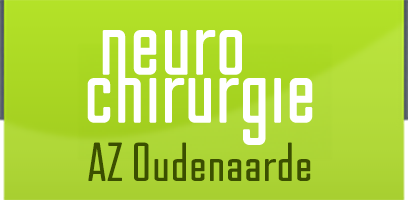Dr Frederic Martens, gewezen diensthoofd neurochirurgie van het Onze-Lieve-Vrouw ziekenhuis te Aalst zet zijn neurochirurgische activiteit verder in het AZ Oudenaarde.
Wat is neurochirurgie?
Welkom op neurochirurgie.be, de site van de afdeling neurochirurgie van het AZ Oudenaarde.
Deze site vertelt u voor welke gezondheidsklachten u op de dienst neurochirurgie van het AZ Oudenaarde terecht kunt. U maakt kennis met de chirurgische technieken die ze gebruikt om u te helpen. Tot slot vindt u hier ook een schat aan praktische informatie: waar u een afspraak maakt, hoe een hospitalisatie en de herstelperiode verloopt, ...
De neurochirurgie behandelt een brede waaier van aandoeningen, die onder te delen zijn in:
